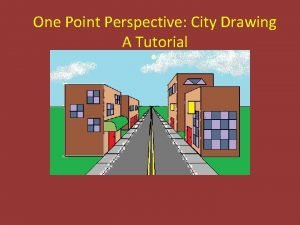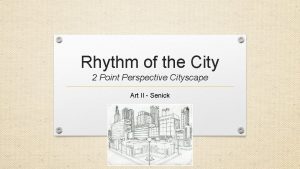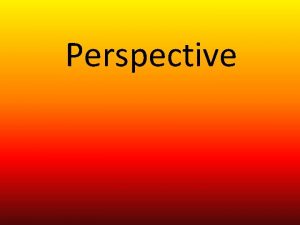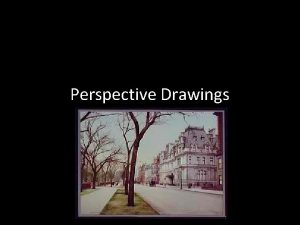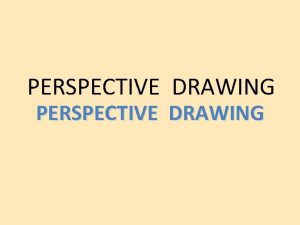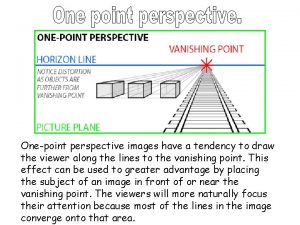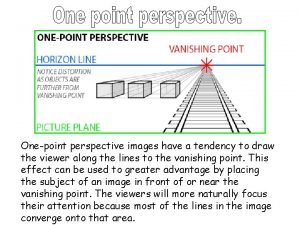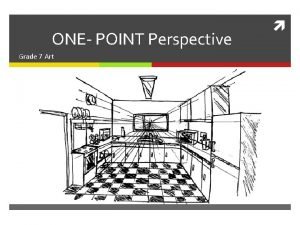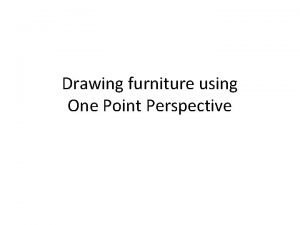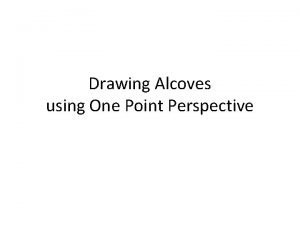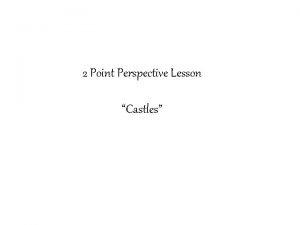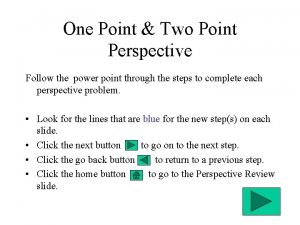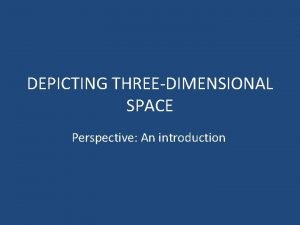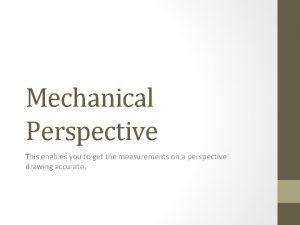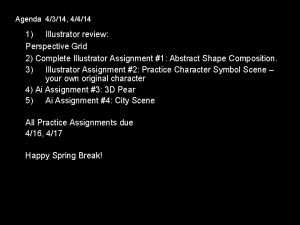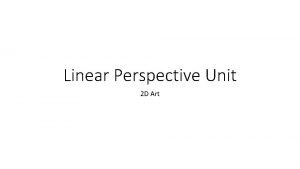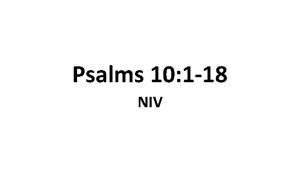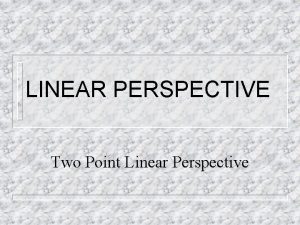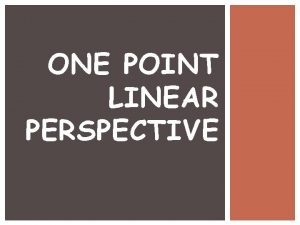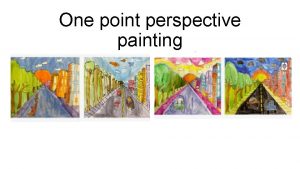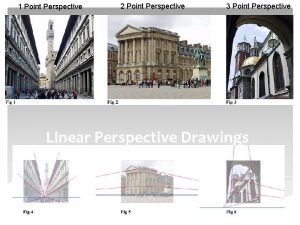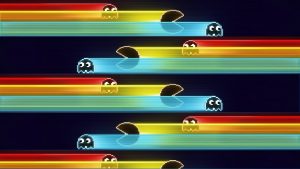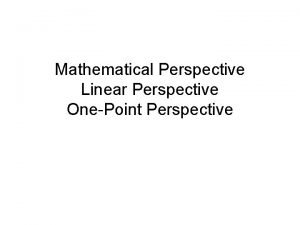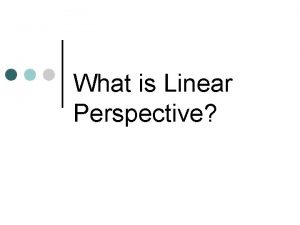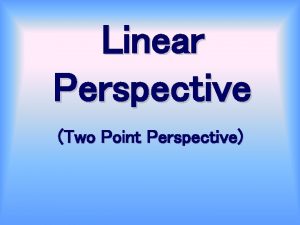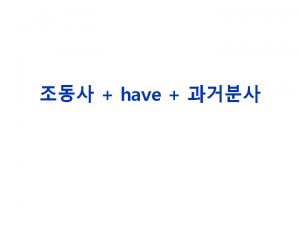Linear Perspective One Point Perspective What is wrong































- Slides: 31

Linear Perspective (One Point Perspective)

What is wrong with these paintings?

Vocabulary

Perspective • Any graphic system used to create the illusion of threedimensional images and/or spatial relationships on a two-dimensional surface.

LINEAR PERSPECTIVE (One Point Perspective) • Perspective that depicts three -dimensional objects receding or proceeding from a vanishing point on a two-dimensional surface.

LINEAR PERSPECTIVE

ATMOSPHERIC PERSPECTIVE

Horizon Line • A line representing where earth and sky seem to meet and is parallel to the bottom edge of a canvas or a sheet of paper.


Vanishing Point • Point on the horizon where receding parallel lines seem to meet.

Orthogonal Lines • Lines that are drawn from the corners or edges of a twodimensional shape to a vanishing point to add threedimensional qualities to the shape.













• Shadows:

• Guidelines: Use 12”x 18” white paper • Draw a horizon line. Draw a vanishing point in the center of the line. • Draw at least 12 geometric shapes using a ruler, compass and stencils only. (no free-hand drawings) • Use a ruler to draw the orthogonal lines for each shape to the vanishing point, making it look 3 -D. Make sure the 3 -D shapes are different lengths. • You must include at least one open shape. • Model all the 3 -D shapes by using the shading value technique. Draw a Light Vanishing Point for the light source, and a Shadow Vanishing Point to add cast shadows and values to all shapes.






Guidelines: 1. Put a vanishing point near the center of your 12”x 18” page. (just a dot) 2. Draw at least 12 geometric shapes using a ruler, compass and stencils only. (no free-hand drawings) 3. Use a ruler to draw the orthogonal lines for each shape to the vanishing point. 4. You must include at least one open shape. 5. Finish each shape, making it look 3 -D. Make sure the 3 -D shapes are different lengths. 6. Model all the 3 -D shapes by using the shading value technique. Pick a direction for your light source, and shade each shape to match that light source.
 One point perspective boxes
One point perspective boxes 2 point perspective city
2 point perspective city Iambic pentameter
Iambic pentameter Cityscape perspective drawing
Cityscape perspective drawing Linear perspective vocabulary
Linear perspective vocabulary 1 point perspective examples
1 point perspective examples One-point perspective definition
One-point perspective definition One point perspective vocabulary
One point perspective vocabulary One point perspective pictures
One point perspective pictures One point perspective pics
One point perspective pics One point room perspective
One point room perspective One point perspective drawing labeled
One point perspective drawing labeled Perspective
Perspective Bedroom drawing
Bedroom drawing How to draw a table in one point perspective
How to draw a table in one point perspective 2 point perspective castle
2 point perspective castle 2 point perspective grid
2 point perspective grid Linear perspective school of athens
Linear perspective school of athens Stairs in 3 point perspective
Stairs in 3 point perspective One point perspective box
One point perspective box The appearance of perspective
The appearance of perspective Mechanical perspective drawing
Mechanical perspective drawing Filippo brunelleschi
Filippo brunelleschi Perspective grid illustrator
Perspective grid illustrator Implied depth definition
Implied depth definition Rectangular prism one point perspective
Rectangular prism one point perspective All the following accurately describe hadoop except
All the following accurately describe hadoop except Psalm 10 niv
Psalm 10 niv One god one empire one religion
One god one empire one religion One one one little dogs run
One one one little dogs run One king one law one faith
One king one law one faith One god one empire one emperor
One god one empire one emperor

